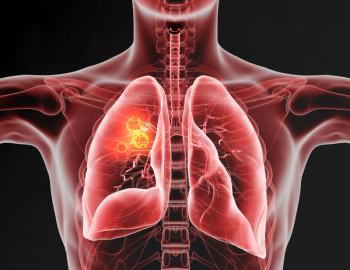
Younger Age Groups Experiencing Increase in Obesity-Associated Cancers
Obesity-associated cancer burden is shifting toward younger individuals, with more dramatic increases in some populations than others.
Diagnoses of obesity-associated cancers (OACs), which occur most often in individuals aged 65 years and older, are shifting toward a younger population, according to a new study published in JAMA Network Open.
Obesity that occurs during adolescence and adulthood has been linked with an increased risk of several types of cancer, including cancers of the colorectal, breast, uterus, ovary, gallbladder, and other biliary organs. Despite known increasing incidence of OACs, there has been little insight into shifting burden across age, race/ethnicity, and sex-specific strata over time.
For the study, the researchers used data from more than 6 million incident cancer cases from the Surveillance Epidemiology and End Results (SEER) database.
Across all groups, the percentage increase in the absolute number of OAC cases ranged from 7.7% in non-Hispanic white women to 123.4% in Hispanic men, according to the results. This is compared with 1.9% increase in non-Hispanic white men to 70.1% in Hispanic women for non-OACs.
Most notably, the analysis showed that increases in OACs among non-Hispanic black and Hispanic women and men for certain cancers increased by 200% to 400%.
Although there was a shift in the distribution of age to 50 to 64 years old, there was an increase in the absolute number of incident cancers, many of which were OACs, in individuals aged 20 to 49 years of age, as well. This especially pertained to non-Hispanic black and Hispanic men and women, according to the study.
“We were struck by the shift in obesity-associated cancers to people in the 20 to 49 age group, but most notably to those in the 50 to 64 age range,” study author Siran Koroukian, PhD, said in a press release. “Keep in mind that the population aged 50 to 64 increased in number by nearly 52% in that time frame, so the absolute numbers of people affected by these changes are substantial. It also is notable that the percent increase of obesity-associated cancer cases was highest among non-Hispanic black and Hispanic women and men.”
Certain OACs were drastically higher in some populations than others. For example, thyroid cancer cases increased by approximately 400% in Hispanic women aged 50 to 64 years, according to the findings. Collectively, the number of all OACs considered in individuals aged 50 to 64 increased by 25% in non-Hispanic white women and approximately 200% in Hispanic men.
According to the researchers, these findings that the burden of cancer is shifting to younger age groups is consistent with previous studies.
“The findings suggest that public health interventions are needed to prevent and reduce obesity and other known risk factors, to implement individualized screening strategies, and to disrupt the obesity-cancer association,” the researchers concluded.
References
Koroukian SM, Dong W, Berger NA, et al. Changes in age distribution of obesity-associated cancers. JAMA Network Open. 2019.
Obesity Pandemic Shifting Cancer to Younger People [news release]. Case Western Reserve University.
Newsletter
Stay informed on drug updates, treatment guidelines, and pharmacy practice trends—subscribe to Pharmacy Times for weekly clinical insights.















































































































































































































